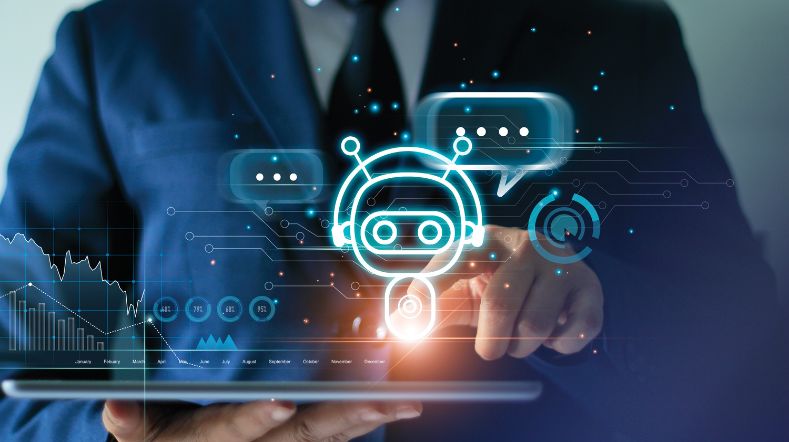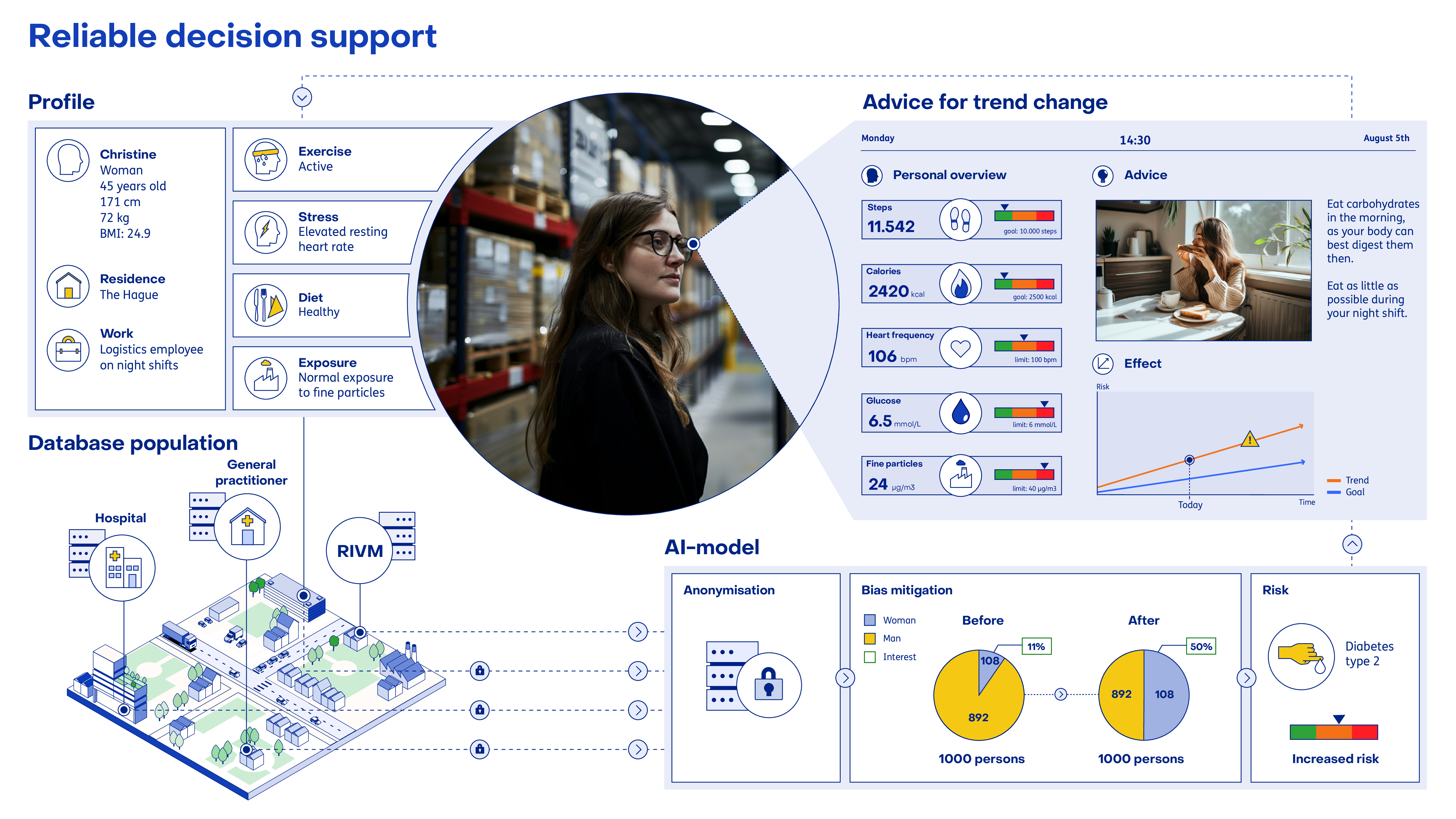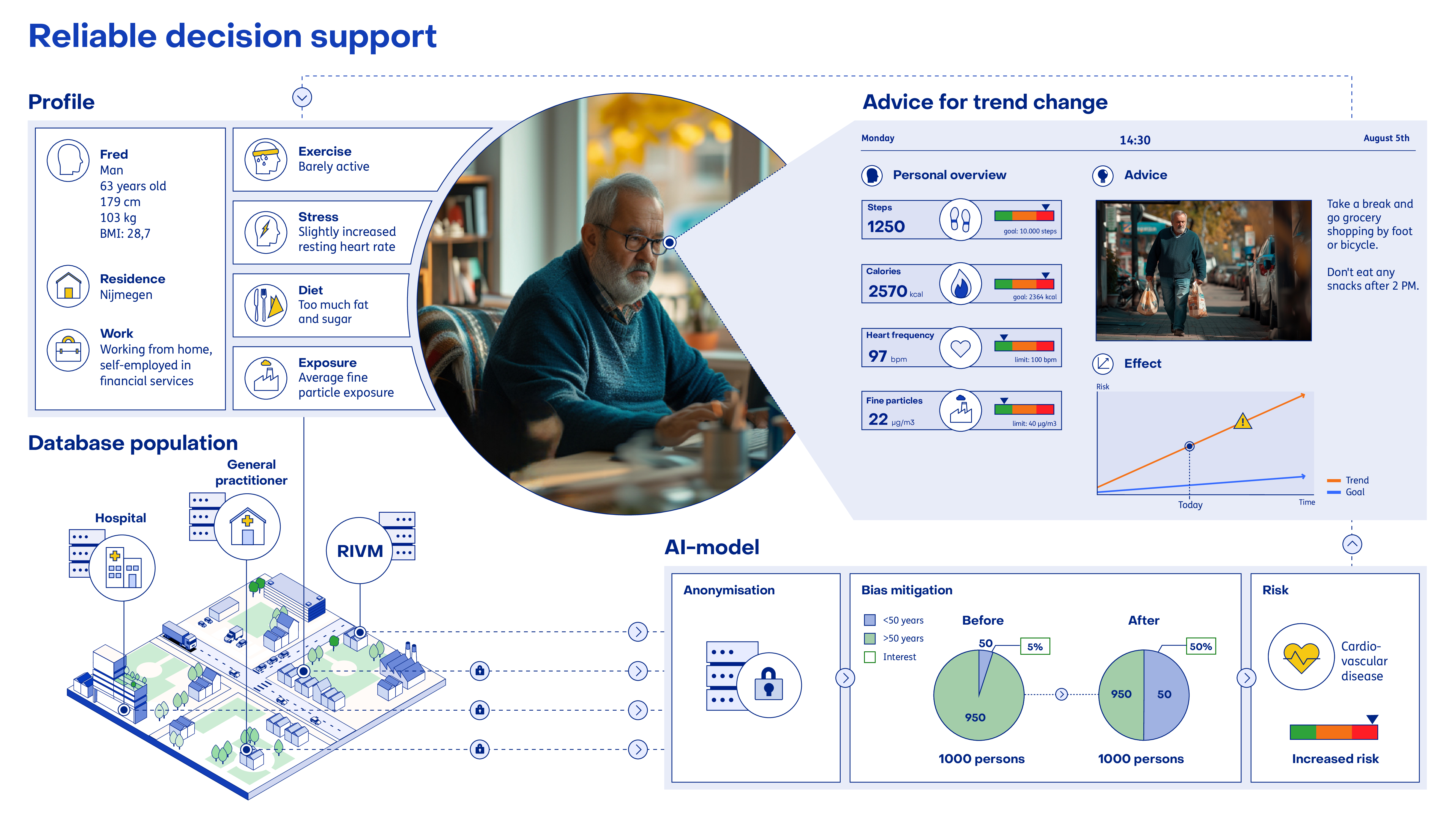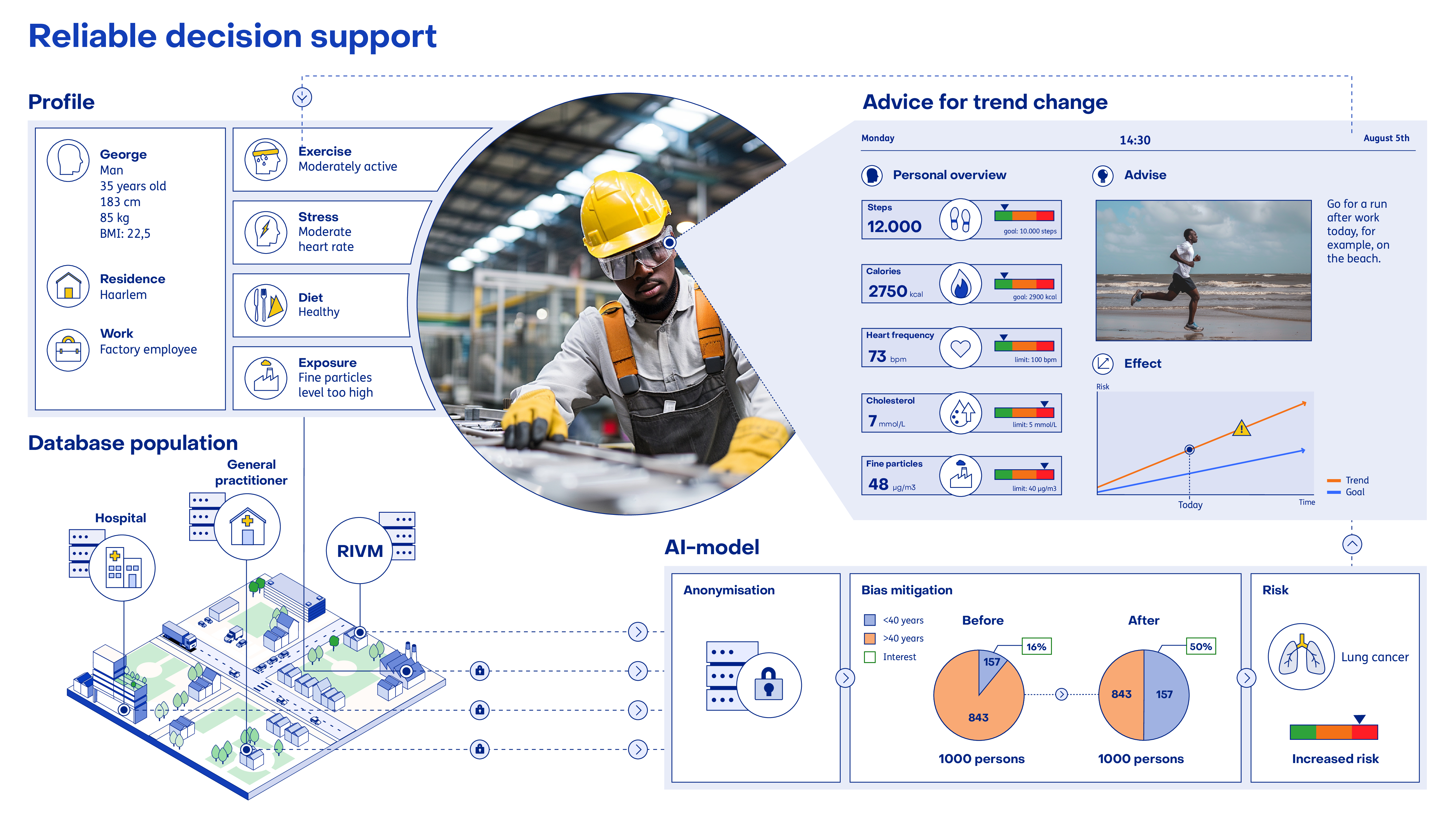
AI model for personalised healthy lifestyle advice
Artificial intelligence (AI) offers unprecedented opportunities to help people live healthier lives. By responsibly using data, including confidential data, AI can give highly targeted personal advice to help you modify your lifestyle. More exercise, a healthier diet, and less stress are factors that can be influenced in a positive way.
Anonymised data
In the F.A.T.E project, TNO is working on technologies to make this possible. We are doing this in line with the principles of the forthcoming European Artificial Intelligence Act, which addresses issues such as fairness, confidentiality, transparency, and explainability. Within this framework, it’s quite possible to build applications that help people make the right choices to support a healthy lifestyle. In doing so, we use fully secure and anonymised data from, for example, doctors, hospitals, and the National Institute for Public Health and the Environment (RIVM).
Tangible and insightful
Exercising more and eating healthier are obvious pieces of advice, but they only really take hold when they are made very tangible and insightful for an individual. What foods should I eat or avoid? At what time of the day? And should I focus more on running or cycling? And what results can I expect from my change in behaviour?
Distorted picture
The AI model we’re developing compares personal data, such as exercise, eating habits, stress, and sleep patterns, from a smartwatch, for example, with that of a relevant population. Many existing models used in the medical profession give a biased picture because certain categories are over or under-represented in the data, or the data are incomplete. The data in these models often also ignore differences between groups in terms of age, gender, ethnicity, or susceptibility to certain diseases.
Predicting the probability of disease
TNO has developed methods to correct bias in models. This makes it possible to predict the risk of certain diseases, such as diabetes, much more accurately for certain groups of the population, and even for individuals. At the same time, highly personalised advice can be offered to each individual to prevent disease.
Doctors can use these models to compare their diagnosis of a patient with a relevant population. As new data are continually added to the self-learning system, the personalised, updated behavioural advice offered by the model will become increasingly sophisticated.
Personalised advice
How will this work in practice? Your age, gender, height, weight, and BMI will be known in the system. You’ll use your smartwatch or some other device to provide your daily data on exercise, food intake, heart rate, glucose levels, and more. The model will then supplement those data with data from a variety of sources and compare them with the population relevant to you.
This will generate a risk score for certain diseases, including an explanation of what the score is based on. The model will then tell you how much the current number of steps, calories burned, heart rate, and glucose level contribute to lowering or increasing this risk score and what you need to do that day to achieve your healthier lifestyle goals.
3 Examples of AI Systems for Decision Support
Below are three examples of advisory models where AI can support human decisions and provide advice based on lifestyle. The model works in 4 steps:
1. Profile: First, a profile of the individual is created, containing data such as name, age, height, weight, BMI, place of residence, work, amount of physical activity, stress score, diet score, and fine particle exposure score.
2. Database Population: The data from the previous step is input into the AI system, along with population data from databases of hospitals, general practitioners, and the RIVM. This data is securely provided to the AI system.
3. AI System: In the AI system, all data is first anonymized. Then, bias is mitigated, meaning the database is corrected for any biases that may already exist in the AI system. This prevents unwanted discrimination based on certain characteristics such as gender and ensures that representative and accurate conclusions are drawn. Next, the dataset is analyzed for health risks such as the risk of type 2 diabetes, various forms of cancer, and cardiovascular diseases.
4. Advice for Trend Change: In the final step of the model, advice for a trend change is given based on various parameters. These include the number of steps, calorie intake, heart rate, glucose level, and fine dust exposure. The graph of these parameters shows the trend towards a healthy goal.
Ultimately, this results in a personalized daily advice based on all the data. Advice for the profiles below includes: eat carbohydrates in the morning, avoid snacks after 2 PM, and go for a run after work today.
Woman, 45 years old, working in logistics.
Man, 63 years old, working from home.
Man, 35 years old, working in the factory.
Want to know more about this project?
Get inspired
Working on reliable AI


AI in training: FATE develops digital doctor's assistant
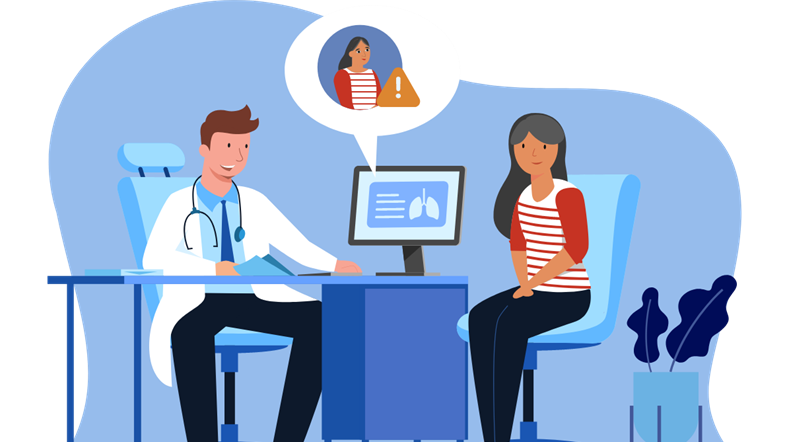

Boost for TNO facilities for sustainable mobility, bio-based construction and AI


GPT-NL boosts Dutch AI autonomy, knowledge, and technology


The Netherlands starts realisation GPT-NL, its own open AI-language model
